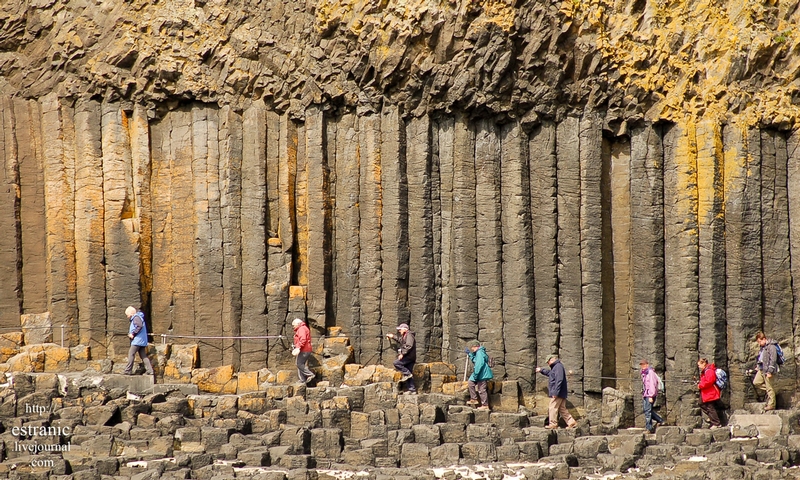
A small island made up of huge basalt columns seems to be an alien base
at first sight. But when you enter one of its caves, you realize it's
indeed something extraterrestrial - so beautiful and strange it is!
A volcanic island of Staffa ("the island of columns" from Old Norse) is
a part of the Inner Hebrides. It was discovered in the 18th century and
now is considered one of the most beautiful places of Great Britain.
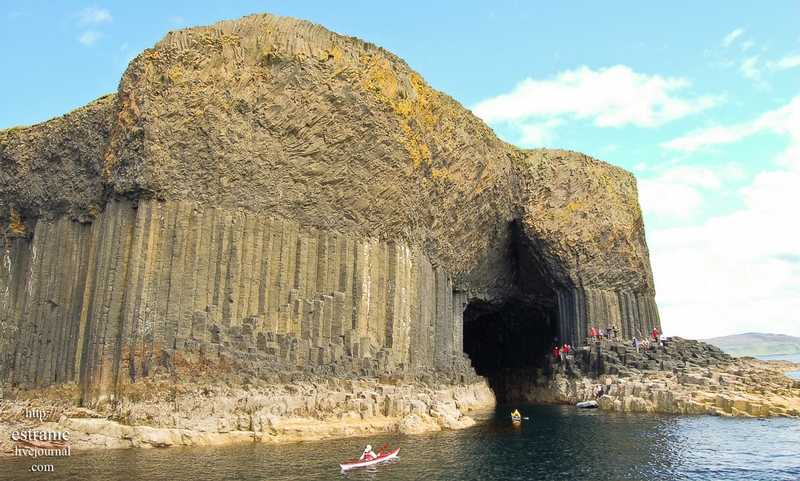
Having the square of only 30 hectares and being located 10 km far from
the nearest island, Staffa has never been a very popular place to live
in. Besides, always terrible weather with squally wind and lack of
moorings don't add any charm to it either. No wonder, its residents left
it in the 18th century.
There is about a dozen caves on the island. The most famous is Fingal's
Cave named after one of the heroes of Gaelic and Irish epics. It's the
only cave on the island which can be reached by land, others are
accessible only by water.
A kayak is the best way to explore Staffa. 10 km of boating, and all the cave wonders are yours.
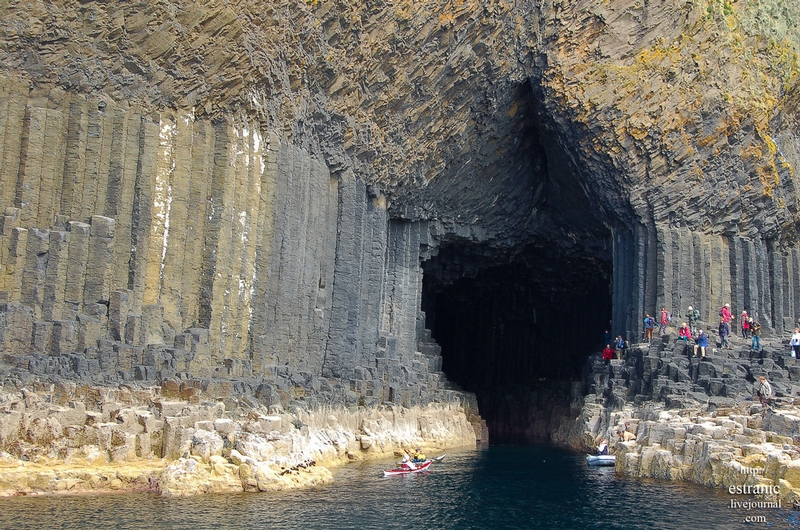
In the right part of the picture you can see the end of the only path
on the island. It's made up of broken basalt columns and is quite
thrilling to walk down. Some of the tourists, though, want more and
climb a really steep hill to see what's going on at the top of the
island. To be honest, there is nothing interesting there. All the beauty
is hidden inside the caves.
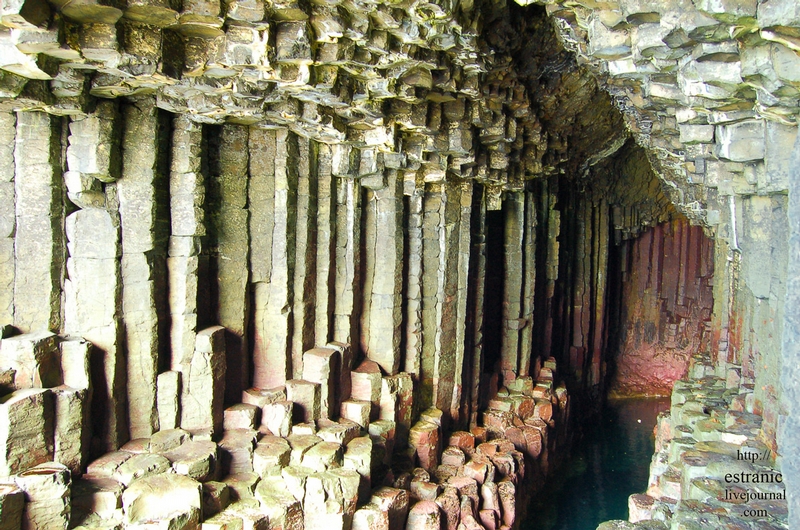
Fingal's Cave - about 20 m in height and 70 m in length. Basalt columns
forming the cave are extremely strong. And extremely slippery - many
tourists have already got evidence of it.
The cave has very special acoustics. Coming into the cave waves create
fanciful sounds which can't be compared with anything. That's why
formerly it was called Uamh-Binn which means "the cave of melody".
Felix Mendelssohn, visited the cave in 1829, was so impressed by its
sonorous breath that soon wrote his own no less beautiful overture
called "The Hebrides" (or Fingal's Cave).
After the triumph of this overture Staffa suddenly became popular. Many
famous people visited it afterwards. Fortunately, they didn't turn it
into another tourist paradise - it was still difficult and expensive to
get there.
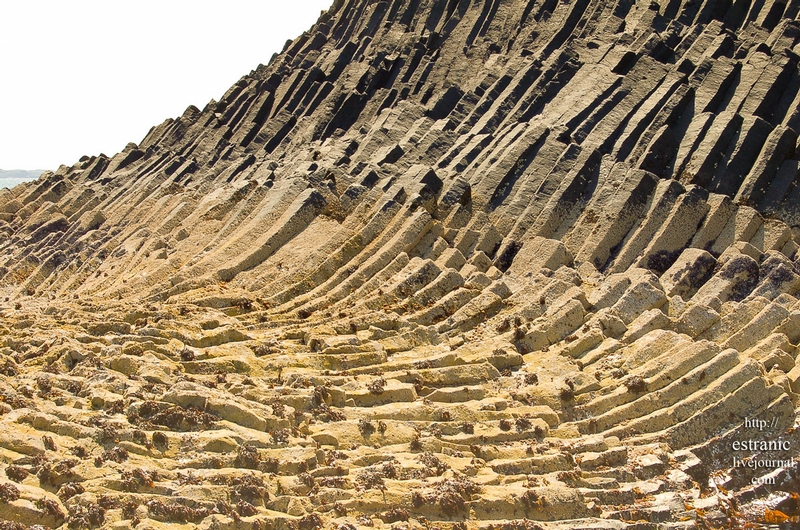
And this place is called "The Shepherd" - a piece of basalt columns one
can see only during the ebb. What the shepherd pastures here remains
unclear. The island has been fully granted to seagulls, cormorants and
other unpretentious birds for about two centuries.
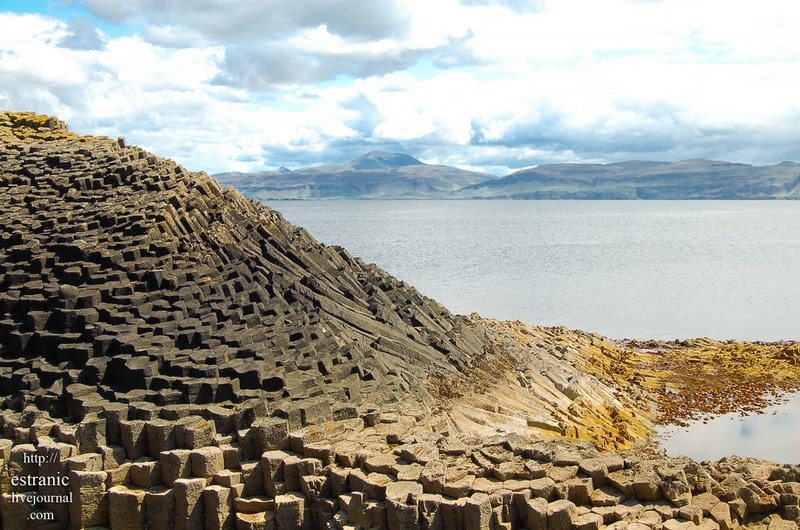
Though there are no any residents on the island now, it has always been
in a private property and often changed hands. Finally, in 1986, its
last owner gifted the island to the National Trust of Scotland as a
present for his 60th wife's birthday. You think there is no sense, don't
you? Doesn't matter. In exchange, the thankful Trust gave the wife a
title of "the Honorary Keeper of Staffa".
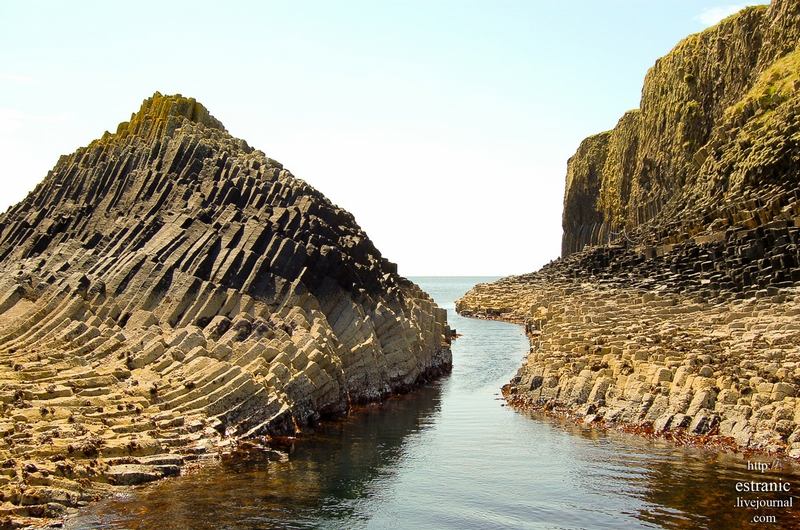
The legend has it that the giant Fingal built a huge road to Ireland
made of hexagonal poles. The remains of this road still jut out of water
in some places.
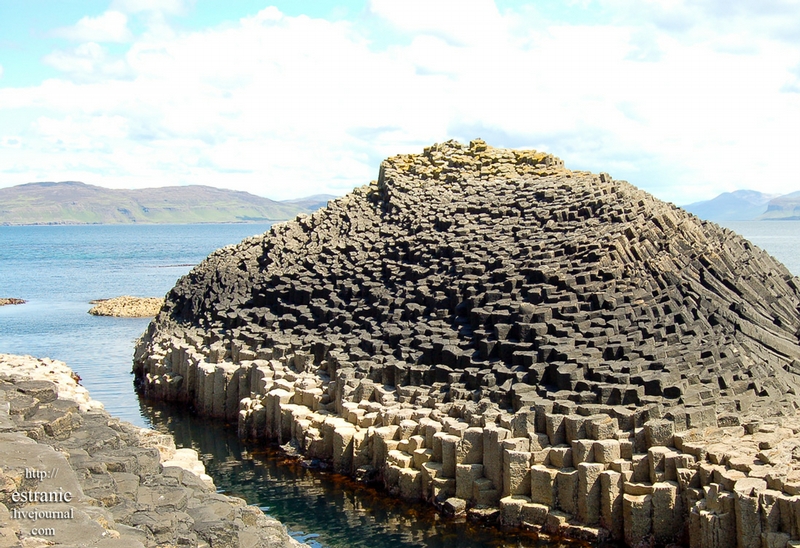
Mackinnons Cave, named after one of the abbots from Iona Island, is
another cave of Staffa. Being 107 m in length, the cave is in the top
hundred of the largest sea caves in the world. To get inside one should
either swim there or use a kayak.
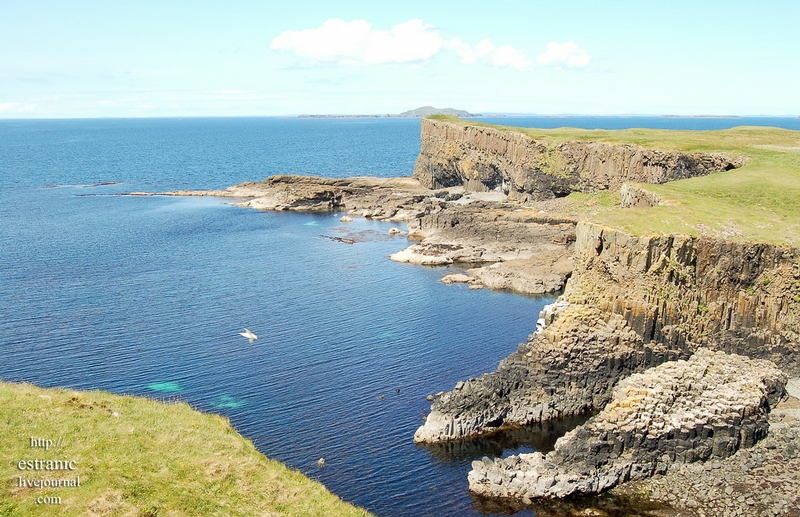
One of the few places on the island which is worth to be climbed on to
see such a wonderful view. It's not recommended to walk downwards as the
ebb happens faster than tourists manage to climb the nearest saving
rock.
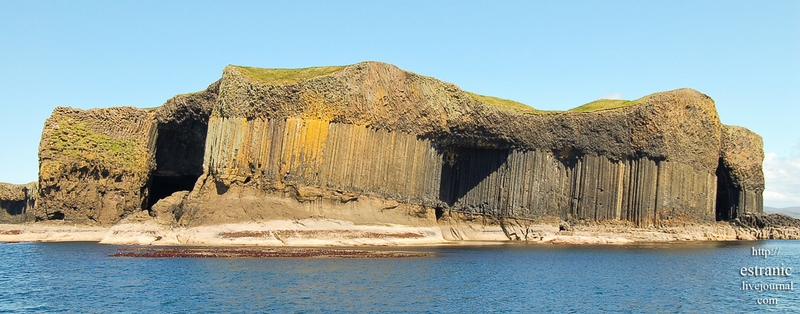
The general view of Staffa Island. The very right cave is the Fingal's
house. An incredible, fascinating and extraterrestrial place indeed.
via estranic




No comments:
Post a Comment